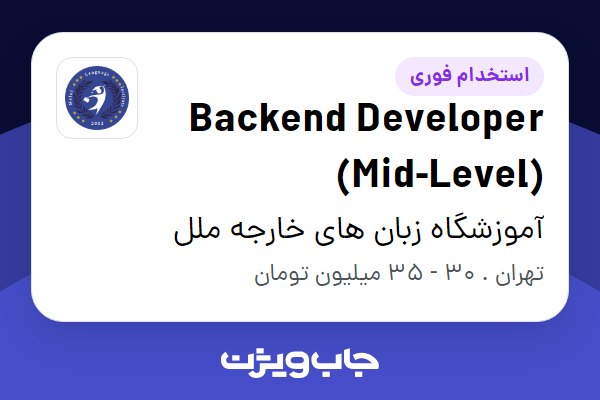Understanding the Core: Necessary Skills Every Back-End Developer Needs in 2025

In the swiftly evolving world associated with web and computer software development, back-end builders remain the unseen force driving efficiency, performance, and scalability. While front-end programmers concentrate on user barrière, back-end developers happen to be the architects of everything beneath typically the surface. In 2025, the role has become more dynamic, requiring mastery involving multiple technologies, gentle skills, and best practices. Here’s an extensive look at typically the essential skill units every back-end designer must possess in order to stay competitive.
one. Proficiency in Server-Side Languages
At the particular heart of back-end development lies effectiveness in one or more or more server-side development languages. In 2025, the most in-demand languages include:
JavaScript (Node. js) for event-driven, asynchronous development.
Python for internet development (Django, FastAPI) and AI/ML incorporation.
Go (Golang) intended for scalable microservices plus cloud-native applications.
Coffee for enterprise systems.
Rust for performance-intensive or memory-safe systems.
Employers value builders who not only know the dimensions of the syntax but also understand design patterns, memory supervision, and performance optimisation.
2. Understanding regarding Back-End Frameworks
Frames streamline development, put in force consistency, and preserve time. Mastery associated with at least one framework will be critical. Popular selections include:
Spring Footwear (Java)
Express. js (Node. js)
Django / FastAPI (Python)
Gin (Go)
Laravel (PHP)
Finding out how to be able to integrate middleware, take care of routing, implement authentication, and scale programs within a structure is essential.
several. RESTful APIs plus Web Services
Developing APIs is a core function regarding back-end developers. Designers must know:
REST principles for building stateless, scalable APIs.
GraphQL for advanced querying.
API records tools like Swagger/OpenAPI.
How to handle versioning, rate reducing, and authentication (OAuth2, JWT).
Finding out how to consume and create APIs ensures seamless front-end integration and program interoperability.
4. Database software management and Design
Just about every application stores and retrieves data, in addition to back-end developers should be proficient in:
Relational Databases: PostgreSQL, MySQL, or SQL Server.
NoSQL Databases: MongoDB, Redis, Cassandra.
Databases normalization, indexing, plus query optimization.

Writing efficient and protected SQL queries.
https://outsourcetovietnam.org/software-development-and-it-outsourcing/back-end-development-outsourcing/skill-sets-for-back-end-developers/ Moreover, understanding ORMs (Object-Relational Mappers) like Sequelize, SQLAlchemy, or Hibernate is extremely beneficial.
five. Version Control Devices (VCS)
Version manage is non-negotiable found in team-based environments. Programmers has to be comfortable together with:
Git commands in addition to branching strategies.
Employing platforms like GitHub, GitLab, or Bitbucket.
Participating in signal reviews and pull requests.
Version management fosters collaboration, permits rollbacks, and helps continuous integration.
six. DevOps and CI/CD Pipelines
Modern back-end developers work tightly with DevOps groups or own section of the deployment lifecycle. Major skills include:
Knowing CI/CD tools just like Jenkins, GitHub Steps, GitLab CI, or perhaps CircleCI.
Knowledge associated with containerization using Docker.
Familiarity with infrastructure seeing that code (e. grams., Terraform).
Basic expertise of Kubernetes in addition to deployment practices.
These types of skills help cut short release cycles plus improve reliability.
6. Cloud Computing in addition to Hosting
Cloud platforms dominate modern program hosting. Developers should be familiar with:
AWS, Google Cloud Platform (GCP), or Ms Azure.
Services like EC2, Lambda, S3, and Cloud Capabilities.
Serverless architecture, fill balancing, and auto-scaling.
Monitoring tools such as CloudWatch, Prometheus, or even New Relic.
Cloud literacy is key point to building scalable, cost-effective systems.
eight. Security Guidelines
Safety is integral to be able to back-end development. Vital knowledge includes:
Protected password handling using hashing (bcrypt, Argon2).

Input validation to prevent XSS and SQL injection.
Authentication and authorization components (OAuth2, RBAC).
Understanding HTTPS, CORS, plus CSRF protection.
Aggressive security measures decrease vulnerabilities and develop trust.
9. Testing and Debugging
A reliable back-end system requires thorough screening. Developers should master:
Unit testing and even integration testing.
Resources like JUnit, PyTest, Mocha, or RSpec.
Use of debuggers, logging tools, in addition to error monitoring systems (e. g., Sentry).
Testing ensures application integrity during your own and iteration.
12. Soft Skills in addition to Collaboration
Beyond complex know-how, back-end programmers must also possess:
Problem-solving skills regarding debugging and optimization.
Communication skills in order to coordinate with front-end, QA, and stakeholders.
Time management and task prioritization.
Agile/Scrum familiarity for collaborative development.
Strong interpersonal skills are necessary in remote and cross-functional teams.
Realization
In 2025, appearing a successful back-end developer means greater than writing server-side logic. It’s about perfecting a multifaceted set of skills that spans architecture, security, DevOps, sources, APIs, and team-work. Those who commit to continuous understanding and adopt a new holistic view associated with development will thrive in the reasonably competitive tech ecosystem.
